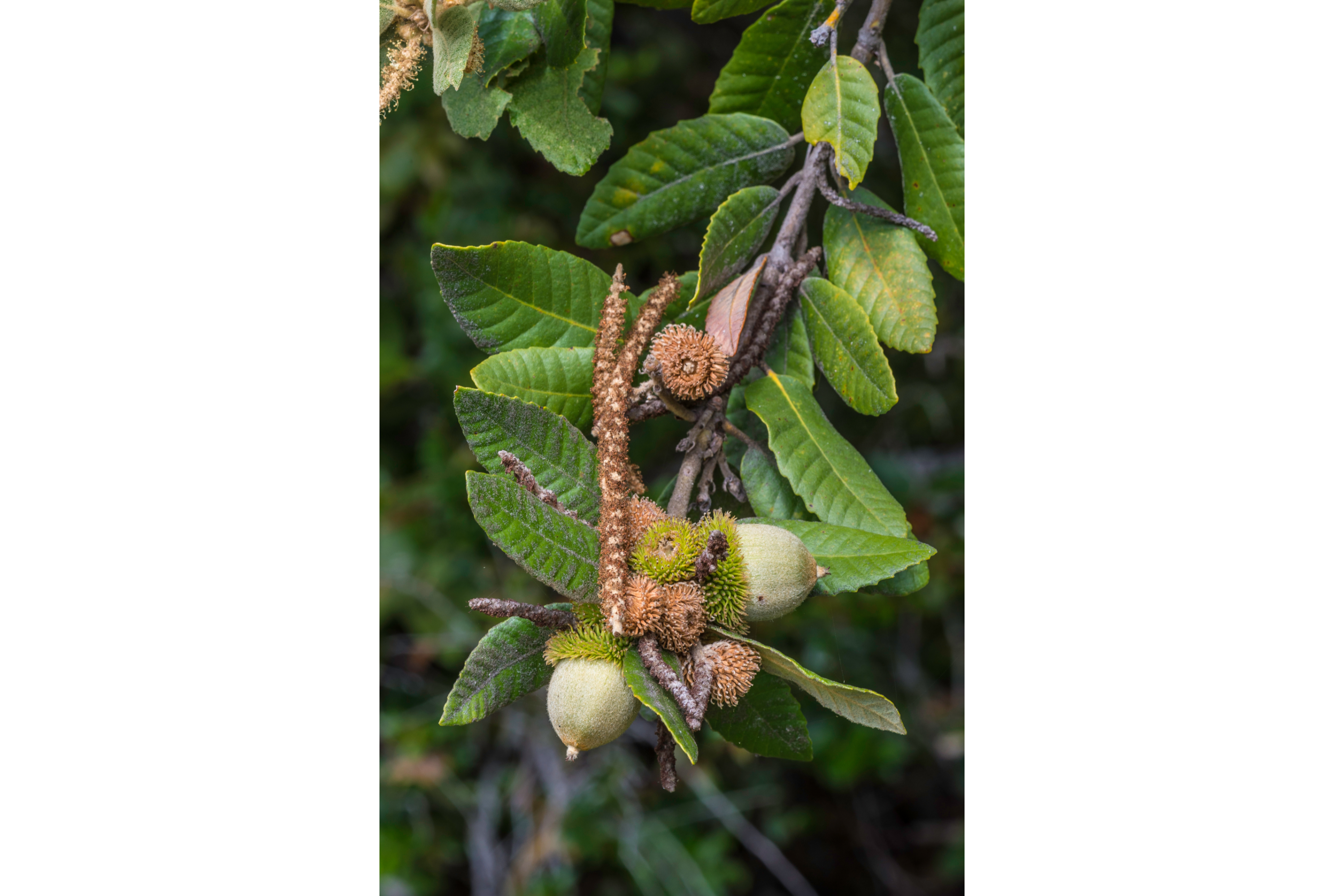Tanoak
(Notholithocarpus densiflorus)

Description
Notholithocarpus densiflorus, commonly known as the tanoak or tanbark-oak, is a broadleaf tree in the family Fagaceae, and the type species of the genus Notholithocarpus. It is native to the far western United States, particularly Oregon and California. It ranges from 15–40 meters (49–131 feet) in height, with a trunk diameter of 60–190 centimeters (24–75 inches). It can reach 40 meters (130 feet) tall in the California Coast Ranges, though 15–25 m (49–82 ft) is more usual,and can have a trunk diameter of 60–190 centimeters (24–75 inches). The bark is fissured, and ranges from gray to brown. The leaves are alternate, 8–13 cm (3–5 in), with toothed margins and a hard, leathery texture,and persist for three to four years. At first they are covered in dense orange-brown scurfy hairs on both sides, but those on the upper surface soon wear off; those on the under surface persist longer but eventually wear off too. The seed is an acorn 2–3 cm (3⁄4–1+1⁄4 in) long and 2 cm in diameter, very similar to an oak acorn, but with a very hard, woody nut shell more like a hazel nut. The nut sits in a cup during its 18-month maturation; the outside surface of the cup is rough with short spines.The nuts are produced in clusters of a few together on a single stem. Currently, the largest known tanoak specimen is on private timberland near the town of Ophir, Oregon. It has a circumference of 7.9 m (26 ft), is about 2.51 m (8 ft 3 in) in diameter at breast height, and is 37 m (121 ft) tall with an average crown spread of 17 m (56 ft).
Taxonomic tree:







